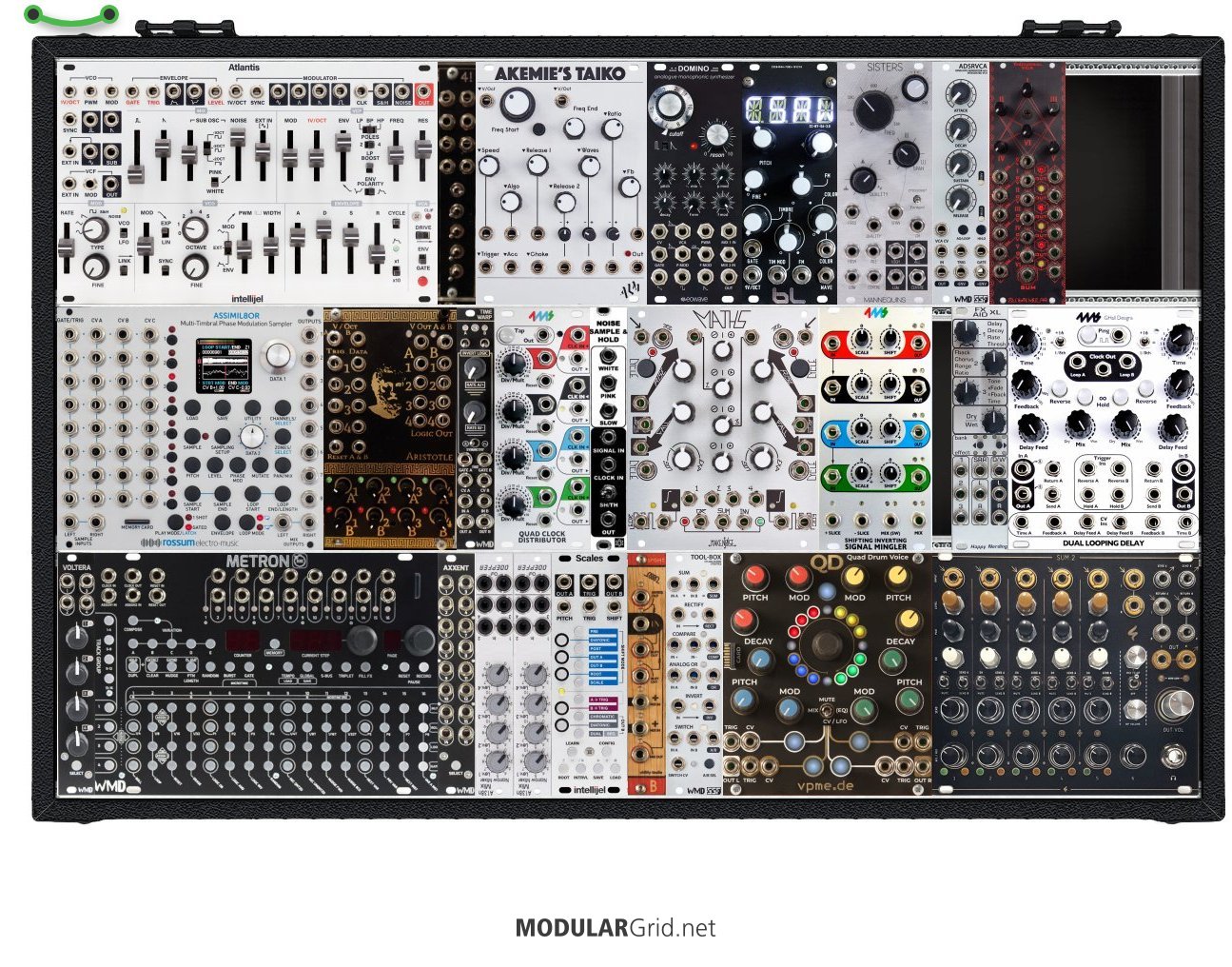This patch illustrates the method I use for additive sequencing using the Metron expander Axxent along with a quad channel mixer and a quantizer to sequence 2 modules with related patterns from one source.
Using the Axxent expander I can set gates high per step on the Metron and these will stay high until they reach a step with no gate where they will immediately fall low. By combining 4 channels of these into a mixer I get a potential pool of notes that includes 16 possible values, (2^4 combinations of on or off). These go into the mixer and each voltage is converted from a 10V gate signal down to a usable voltage to represent a pitch interval (so 1V would make a 1 octave interval). It's quite difficult to tune these intervals precisely by ear, and it would be tedious to try, so the next stage is a quantizer where we tune our combined attenuated signals into a constraint like a scale or a chord. From there I the output to a buffered mult on Spaghetti, with one out going into channel 1 of time warp to create gated slides and then off to my lead line in Atlantis. Buff out two goes into a sample and hold where I am able to take a snapshot of whatever note is currently playing on the lead line and this is sent off the Domino to play a Bassline. The Bass line stays the same until I snap another picture of the Lead line with the S&H. I made the S&H take its trigger from the same metron channel that sends the trigger to the S&H which should not be the case, I will attempt to edit that, I want to be able to trigger the Bassline multiple times without it necessarily needing to take a new note value each time, so those should be on two channels of Metron, not one.

